Spam musubi is a popular dish that you will find all over Hawaii. But if you want to make the dish at home, then you will need to know how long the leftovers will last. Let's take a look at the average storage life below.
On average, you can expect leftover Spam musubi to last 3 days when refrigerated. The longer Spam musubi is stored, the more taste and texture will change. For best results, store the musubi in the refrigerator and eat it within 24 hours.
It's good to know how long your leftover Spam musubi will last so it doesn't go to waste. In this article, we will take a closer look at how to store the Hawaiian dish. In addition, we will answer other frequently asked questions about Spam, so read on!
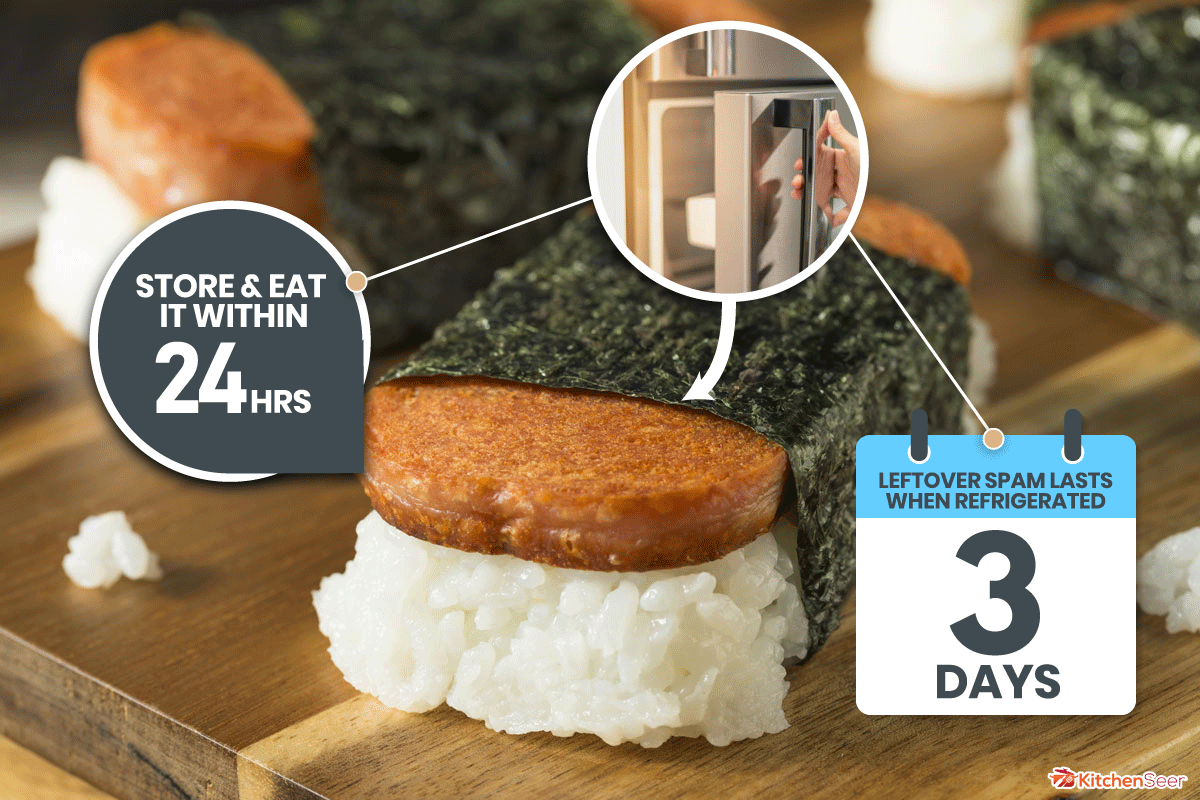
Does Spam Musubi Need To Be Refrigerated?
Invented by Japansese-American women, Spam musubi is a favorite dish in Hawaii. Made with fried Spam, a block of rice, and wrapped in nori (seaweed), it's an easy dish you can make at home.
But if you made too many, you may want to store them for later. The best way to store Spam musubi is in an airtight container in the refrigerator.
Like other food items, Spam musubi shouldn't be left at room temperature for longer than 2 hours. After the allotted time, the Spam musubi will become a breeding ground for bacteria and could make you sick if consumed.
While Spam musubi will last 3 days on average when properly stored, it should be consumed earlier. As the dish sits in the fridge, the rice will become stale, and the seaweed will get soggy.
With that in mind, eating Spam musubi within 12-24 hours is best for the best taste and texture. When you are ready to eat the leftovers, you can either eat it cold or warm it in the microwave for 30 seconds to a minute.
You can also experiment with reheating the musubi by heating it in the air fryer. Another thing you can try is wrapping the pieces in tinfoil and broiling them on low heat. Who knows, you might get a better outcome than using the microwave.
Another option is to only make as much musubi as you can eat at a time. Then, you can make more if you are still hungry. The taste will be better, and you don't have to worry about wasting any food.
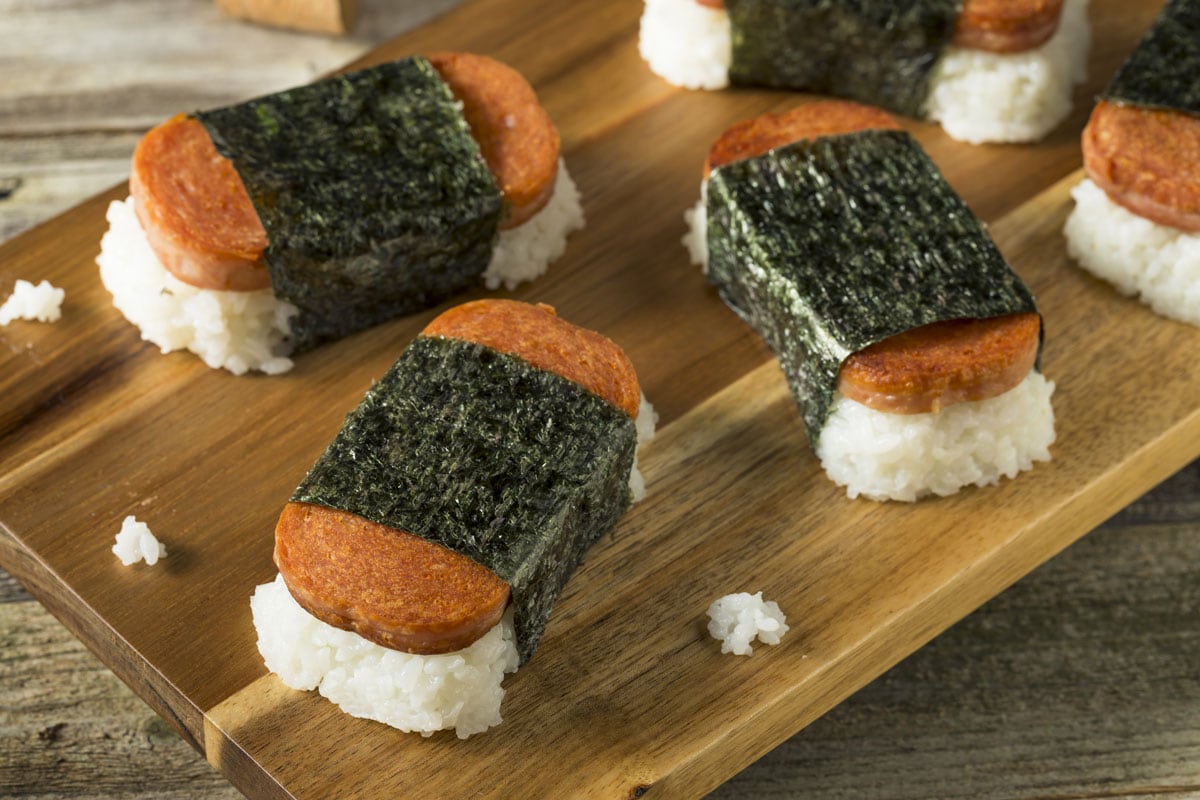
Can You By Spam Musubi Already Made?
If you visit a convenience store or supermarket when visiting Hawaii, there is a good chance you will see ready-to-eat Spam musubi. This is a quick and easy dish for kids and adults living on the islands.
However, like other ready-to-eat meals, you should take precautions before making a purchase.
Properly Stored
Spam musubi should be stored below 45 degrees Fahrenheit or above 140 degrees Fahrenheit. If it's not, bacteria could be present and can make you sick when consumed.
For example, if the musubi is stored outside of a refrigerator or a hot box, then it's best not to eat it. Most stores will have a thermometer so you can check the internal temperature of the Spam musubi. If you don't see one present, then ask the store clerk.
Check For The Best By Date
Every Spam musubi package should have a "best by" date on the label; if it doesn't, then don't purchase it. If it does, but it's past the suggested time, then it may not be safe to eat.
Eat It Right After You Buy It
As mentioned, the sooner you eat musubi, the better it will taste. If you purchased it at a store, then it's best to eat it as soon as possible.
It's tough to say at what time the musubi was made, so the texture could already be compromised. And the longer you wait, the worse it will get.
The last thing you want is to get sick while on a vacation in Hawaii. Take the necessary precautions when buying Spam musubi on any of the islands.
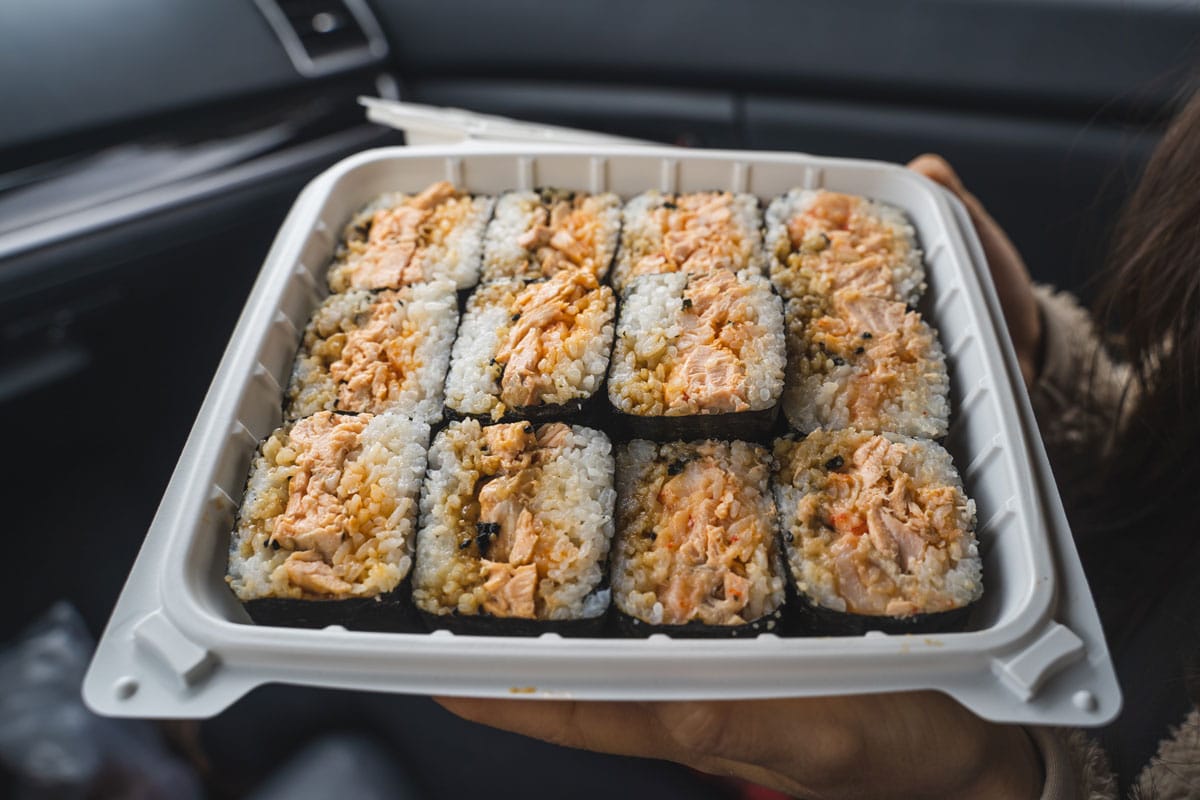
How Do You Make Spam Musubi?
If you want to make homemade Spam musubi, then you will need the following ingredients:
- Can of Spam (Classic or Teriyaki flavor)
- Package of Nori Sheets (cut into thirds)
- 6 cups cooked sushi rice
Slice And Fry The Spam
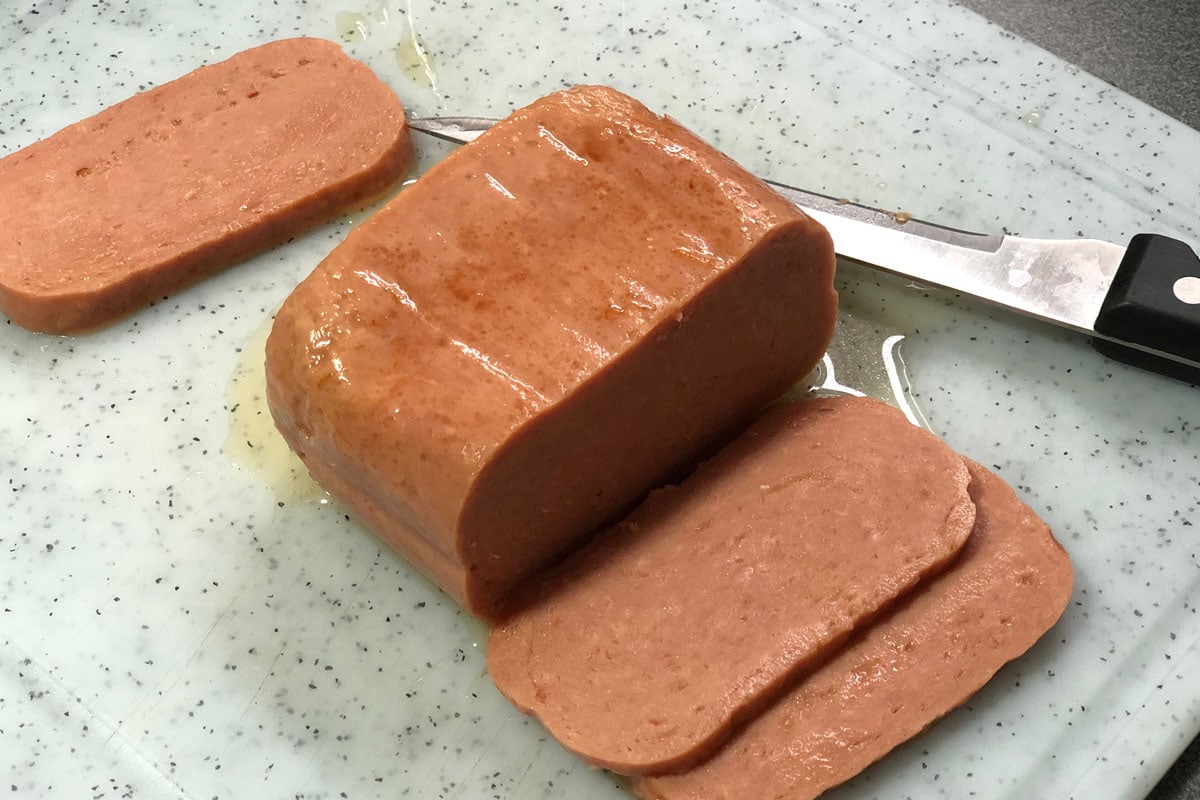
First, you will need to slice the spam into 8-10 slices. You can make more or less depending on how thick the pieces you want. Do not throw away the Spam can; we will need it later for a musubi mold.
If you are using the Classic Spam flavor, you can marinate the meat slices for 15-30 minutes. A good marinade mixture is 1/4 cup oyster sauce, 1/4 cup soy sauce, and half a cup of sugar. However, feel free to use your own marinade if you want.
Once marinated, drain off the marinade, and pat the Spam slices dry. Then, heat a skillet on medium-high heat and sear the Spam for 3 minutes on each side.
When the Spam is fried, you can glaze them with the leftover marinade and set it aside.
Create your Musubi Mold
Using a piece of plastic wrap, line the Spam can with enough wrap so that it hangs over the sides. Next, take a small handful of rice (3 tablespoons) and line the bottom of the can. Press down firmly so the rice is flat and forms together.
Now, you can take a slice of Spam and place it on top of the rice bed. Then, place another handful of rice (3 tablespoons) on top of the Spam slice. Again, press down firmly so it forms together and flattens out.
Take The Musubi Mold Out
Now we can finish off our first Spam musubi roll. Place a cut sheet of nori on a clean cutting board. Carefully lift up the plastic wrap with the musubi mold and place it on the nori.
Lastly, roll the nori around the musubi mold and press them together. This will create a nice wrap for your first Spam musubi.
Repeat The Process
You can repeat the process until all of the ingredients are gone. Some like to dip their Spam musubi in ketchup or soy sauce, but the choice is yours.
While this is the easiest way to make Spam musubi, there are several recipes online that call for other ingredients. However, feel free to experiment and create your own twist on the Hawaiian dish.
For example, instead of doing two layers of rice, you can add slices of cucumber or carrots. You can also add a piece of fried egg between the two layers of rice.
Why Is Spam So Popular In Hawaii?
You may be wondering why out of all the places in the world, Spam is so popular in Hawaii. Shortly after Spam was introduced to the market in the late 1930s, World War II broke out.
As more soldiers were stationed in Hawaii, Spam was a quick and easy food that could be served. After the war ended, Spam continued to gain popularity and can be found in many dishes, such as Spam musubi.
However, Spam can be used in a number of dishes and snacks we make at home. Spam is made from pork, ham, and a few added ingredients. So, Spam is a good alternative for anything you would make with ground pork or ham.
How Long Is Spam Good For?
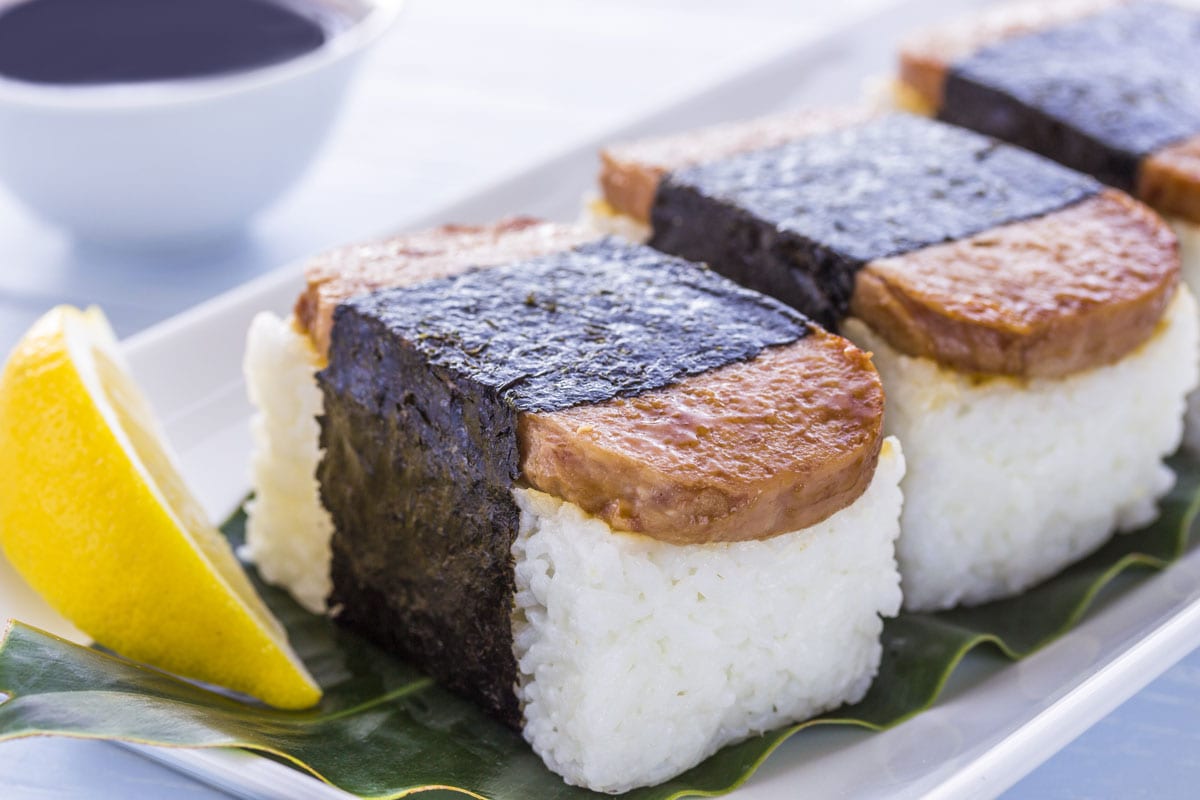
Canned meats are notorious for being able to have a long shelf life thanks to preservatives. That's why when you look at a can of Spam, you won't see an expiration date. Instead, the can will have a best by date.
The best-by date is usually marked for 3 years from when the product was manufactured. Therefore, if you have an unopened can of Spam that is past its best by date, it is still safe to eat as long as there is no damage to the can.
For example, it shouldn't be consumed if the can has punctures or signs of leakage. The texture and flavor of the meat can degrade the longer it is stored. Be sure to store your cans of Spam in a cool, dry place or in a refrigerated for optimal shelf life.
Final Thoughts
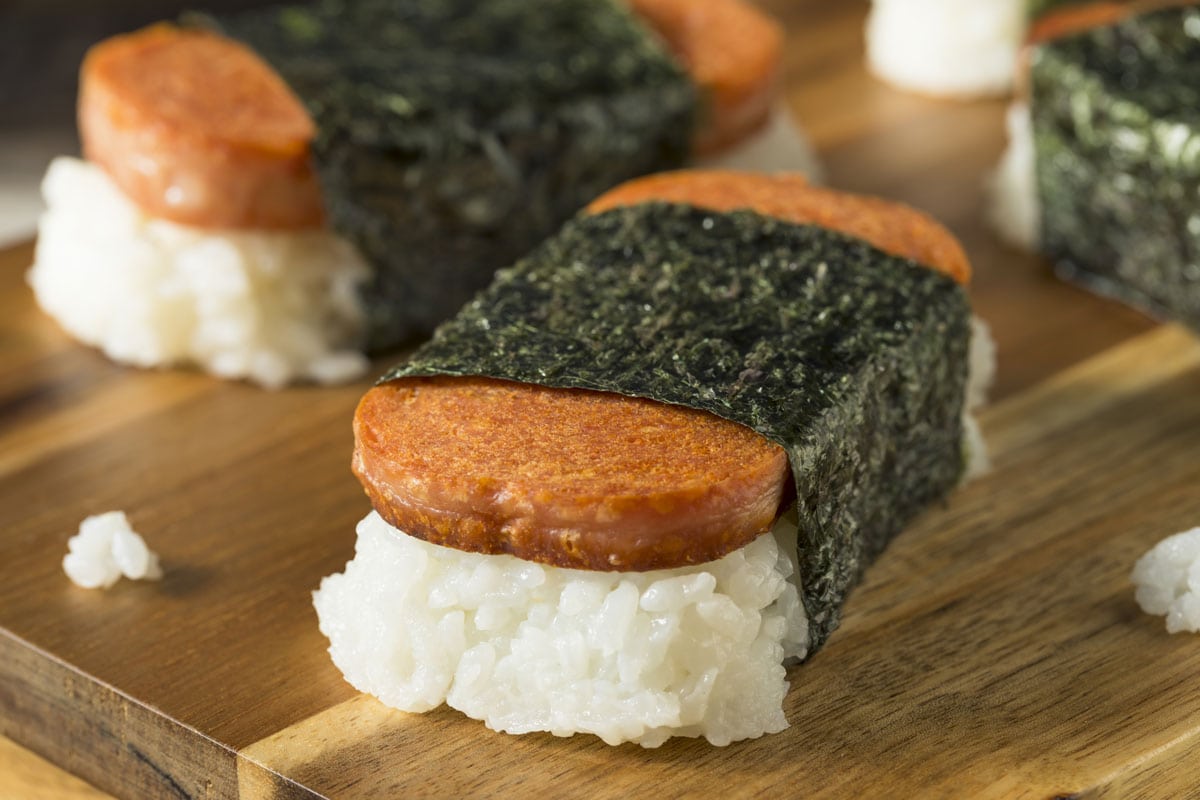
Overall, Spam musubi is best enjoyed shortly after it's made. Once it's been refrigerated, it may not be as appetizing as the texture of the seaweed and rice change. Following the tips and tricks in this post, you can enjoy Spam musubi whenever possible.
Made it to the end? Here are other articles you might find helpful:
Luncheon Meat Vs Spam: What’s The Difference?
How To Cook Canned Asparagus [5 Ways You Will Love!]
Is Canned Chicken Always Pre-Cooked?

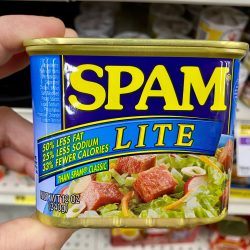
![Shoppers hand holding a can of SPAM brand canned meat, How To Make Spam Less Salty [Four Ways To Try!]](https://kitchenseer.com/wp-content/uploads/2023/01/Shoppers-hand-holding-a-can-of-SPAM-brand-canned-meat-3-250x250.jpg)
![Shoppers hand holding a can of SPAM brand canned meat, How Long Does Spam Last In The Fridge? [Opened & Unopened]](https://kitchenseer.com/wp-content/uploads/2023/01/shoppers-hand-holding-a-can-of-SPAM-brand-canned-meat-2-250x250.jpg)
![Oven-roasted turkey spam in a can, Can You Eat Spam Raw? [Should You?]](https://kitchenseer.com/wp-content/uploads/2023/01/Oven-roasted-turkey-spam-in-a-can-250x250.jpg)

![Hand opening a can of spam, How To Get Spam Out Of Can [Quickly & Easily]](https://kitchenseer.com/wp-content/uploads/2023/01/Hand-opening-a-can-of-spam-250x250.jpg)